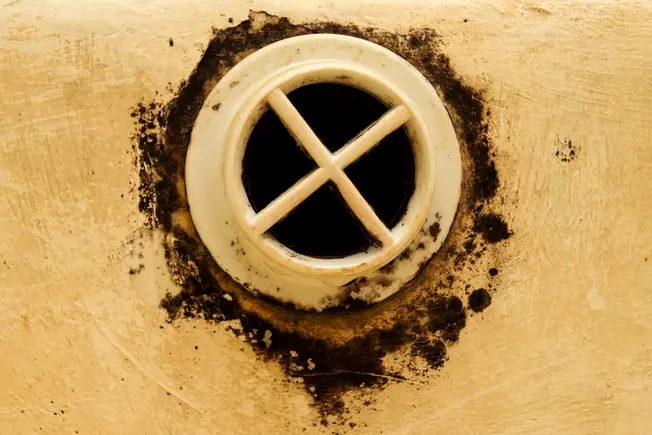Is Your House Making You Sick?


Mold
Its spores can cause a stuffy nose, cough, sore throat, and itching. If you have mold allergies, lung problems, or a weak immune system, these spores can lead to a serious lung infection. Mold grows where there’s moisture, so watch for leaks in plumbing, walls, and the roof. Use air conditioning or a dehumidifier to keep humidity levels under 50%. Clean up mold with soap and water, or use 1 cup of household bleach in 1 gallon of water.

Radon
Rock and soil release this gas. There’s a little in the air around us, but it’s dangerous if too much is trapped in your home. Its radioactive particles cause damage when breathed in or swallowed. It gets into buildings through cracks and holes in floors and walls, and around plumbing and wiring. You can’t smell or see radon, but a simple test can tell you if your home has too much. If you do, hire a certified contractor to make fixes.

Carpet
It can trap dust, mold, dust mites, dirt, and other irritants. When you clean it or walk on it, those particles can get into the air. The chemicals used to make and install some carpeting could be bad for you, too. Consider hard flooring instead, or use throw rugs you can clean outside your home. If you can’t get rid of your carpet, use a vacuum with a HEPA filter on it at least three times a week, and steam clean it every year.

Cockroaches
Their poop and parts of their bodies can settle in the dust on your floors, bedding, and furniture. When you breathe those irritants in, it can trigger allergies and breathing problems, including asthma. It helps to keep your house as clean and dry as possible, especially fabrics and carpet.

Carbon Monoxide
Furnaces, fireplaces, water heaters, dryers, and cars can make this gas you can’t smell or see. It can be deadly if it isn’t vented out and it builds up in your home. Install carbon monoxide detectors inside, and use appliances properly. The symptoms of carbon monoxide poisoning are a headache, shortness of breath, blurry vision, and feeling dizzy, confused, weak, and nauseated. If you have them, get fresh air right away, then call 911.

Humidifier
It adds moisture to the air. But don’t just set it and forget it. Humidity above 50% may invite bacteria, fungi, and other germs. And water starts to condense on windows and other home surfaces around 60%. Plus, the humidifier itself can grow mold and bacteria that blow into the air unless you clean and dry it daily. You can measure humidity levels with a tool called a hygrometer from the hardware store.

Curtains
They can hold dust mites, pet dander, mold, and other allergens. The same goes for blankets, clothes, rugs, sheets, and other fabrics around your house, but curtains are often harder to clean. Use blinds instead, and dust them regularly. Or get curtains that are safe to wash in 130-degree water to keep the dirt and allergens to a minimum.

Household Cleaning Products
Ingredients in them can irritate your throat and eyes, causing headaches, breathing problems, and other ailments. Some might even raise your risk of cancer. Aerosols have volatile organic compounds (VOCs) -- chemicals that can cause damage. And ammonia and bleach can be harmful if you don’t handle them properly. Use products that have fewer or no VOCs, fragrances, and flammable ingredients. When you use them, keep doors or windows open.

Air Conditioning and Heating
These systems change the level of moisture, dust, and germs in your home. Make sure yours is properly installed and serviced, and change filters regularly. You can even try a special HEPA filter that removes smaller particles from the air in your house. You may want to consider professional cleaning if mold builds up inside the air ducts, if dust and debris clog them up, or pests like mice or other rodents make them their home.

Lead Paint
If your home was built before 1978, it’s likely there’s lead-based paint on the inside or outside. If it’s in great shape, it may not be a problem. But when it starts to chip, peel, crack, or wear away, it can form dust, which can damage your brain and other organs if your body absorbs it. In kids, it can cause behavior and learning problems. A professional can test your home for lead and tell you what to do to address any issues.